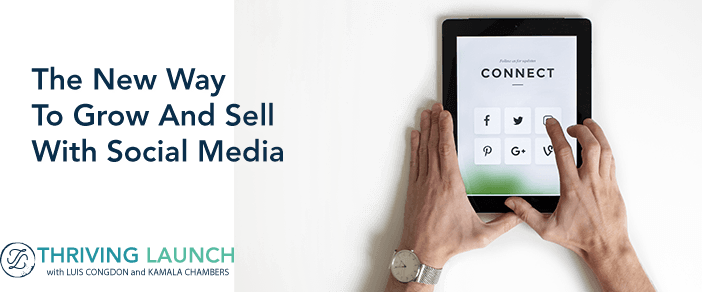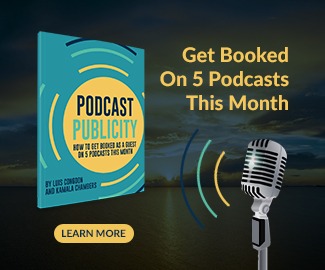As business owners, we often look at social media accounts and think, “That’s what I need to sell and influence with social media.” Sadly, it’s this kind of thinking that stops many potential influencers and entrepreneurs from taking the steps necessary to grow an audience, create influence, and makes sales with social media.
Not only is the belief that we need a big account to make sales and impact a hindrance to our growth online, but it’s wrong. In fact, according to research by multiple sites like Hubspot, Adweek, and HelloSociety, big accounts get up to 60% less engagement than smaller accounts.
In today’s post, I’d like to buck the trend that says, “Follow big accounts” and instead encourage you to find smaller niche accounts to follow, emulate and learn from. Instead of talking to you about the social media celebrities that everyone talks about, I believe it’s more productive for me to help you understand a more tangible strategy that will help you crush it on social media. These methods may not make you an account owner with millions of fans, it may not help you go viral, but instead, they can help build a community of really engaged followers. While I’ve always loved the saying, “Go big or go home,” I believe that on social media, going big is unlikely for most people – but going mid-size or even small doesn’t make you a loser – in fact, it can make you win big time.
On social media most everyone is raving about the size of their accounts, but, what truly matters is how you engage and create impact with what you have. Ultimately, it’s not the size that matters the most. Instead, it’s how the audience responds and engages. With these tips, you’ll stop worrying about the size of your account, and you’ll stop measuring the size of your account and instead you’ll use a new and more valuable metric – engagement.
Creating engagement doesn’t have to be complicated, it can be simple, but that doesn’t mean it won’t take work and consistency. So, how do you build a substantial online following and social media to increase brand awareness to attract more clients and drive more traffic to your website?
1. Create Regular Content Curated For The Few
Most people online spray paint their message hoping it’ll stick. When I look at business pages, they post stuff about the deals they’re putting on. They post pictures of their products, images of their offices, and boring content that no one cares about. It all looks the same. Most of it doesn’t stand for anything. It’s just bland, everyday run of the mill social media content, the stuff we all skim past – and being scrolled over on social media kills your fandom and exposure.
Instead of primarily posting content about your products and services, try making content that appeals to the more profound psychological triggers of human beings. An image of a t-shirt or a post about your new ten percent off sale doesn’t appeal to most people. That’s boring, tired, and overly done.
A new content strategy will help you create real fans and engagement. This approach means you need to think a little and be willing to push some people towards you while possibly driving others away from you.
Post often and post about the deeper meaning behind your brand. As serial entrepreneur and multi-millionaire, Bo Peabody, put it in his book, “Lucky or Smart?: Secrets to an Entrepreneurial Life,” people love to get behind brands with missions more significant than just money. If your brand stands for something that elevates people, it’s much easier to make sales. This means, when you just post about discounts and your products, it’s flat marketing. It’s boring and doesn’t trigger the most profound human emotions.
If you’re a clothing brand, don’t just post pictures of clothing. Post images of donations you give, vendors whose lives have changed because of you, and post about your mission to change the world. Using a major company as an example, take a look at Harley Davidson on Facebook. As a major brand, Harley learned early on that winning in the bike business meant having something more than ‘just a bike’ to attract fans. They didn’t advertise like everyone else. Instead, they made their brand stand for being American, being free, and living a life of full-on freedom – the American way. Their posts reflect these sentiments and their bikes are secondary to this bigger picture.
Analyzing Harley Davidson’s Facebook profile, you’ll find that they post images of flags, American men riding their bikes, stories of users of their bikes who use those motorcycles to find freedom. That’s something an individual can look at and feel inspired by. That’s how you create a movement.
2. Tell Stories That Are Personal And Attached To Human Beings
A friend of mine makes videos for Microsoft, Google, Nike and other large-scale companies. In a conversation, he once told me that his biggest issue with tech companies was their obsession to anthropomorphize their technology. When they hire him, they always ask him to ‘tell the story of the phone and how it came to be.’
As an intelligent marketer, my friend always responds with, “Let’s tell the story of the item as it relates to humans. Let’s show the item being used by a Mom and how it saves her time. Let’s show the item being used by people and improving those people’s lives.” When it comes to marketing and video, he understands an essential element that all brands need to understand too; people relate to people and stories, not to objects. This is why images of your clothing, the discounts, and pictures of your cool store won’t likely create active engagement on social media.
In a recent interview, we sat down with copywriting legend, Kevin Rogers, and discussed the essentials of writing to create demand and sales. In that interview, his number one tip for all copywriters is ‘learn to sell with a story.’
Instead of posting about the discount, tell a story about how this new dress came to be. Here is something I might write: “When we first dreamed up this dress, we asked, what does a mother need? We know she’s busy, it’s hard for her to dress up easily and it’s demanding to be a mother. So, we designed this new dress to be stain proof and quick drying while also being sleek and sexy.” Or I might have a video of a mother wearing the dress and take the viewer through the day of a mom wearing this dress – showing how it helps make her life easier.
This is a decent start, but we can do better. We could make posts about how our company has a mission to feed a million homeless families. I’d post a video with limited branding attached to it, and instead, make the video showing faces we’ve fed, families we’ve donated to, and people who have been served by us. Maybe in the video, the employees would be wearing the clothing line, and maybe at the end, we’d put the brand’s logo and website at the end along with a tagline from our mission statement.
From these examples, we’re starting to go deeper into humanizing a brand. We can go deeper though; we can tell more stories, show more images of customers, clients, and our staff. Diving deeper triggers deep human emotions and inspires them to become fans.
As a consumer, I like to buy from companies that stand for something. Those stances aren’t always clear, and they are often not shared enough on social media. If you want your clientele to become your fans, use stories on social media to help your company become more significant than just ‘the items you sell.’
3. Don’t Be Afraid To Drive Away Non-Fans.
Some brands stand for something that drives and pushes specific clients away – but at the same further, endear a certain group of people. Contrary to what you’d think, repelling people away is good for sales, fandom, and engagement on social media. We don’t want to drive everyone away, but it’s good to force a few people to decide which side of the fence they’re on. If they’re with us, they’ll love us, and if not, they’ll go away – and that means they’d likely become real fans anyways.
If you try to be everything to everyone, you’ll likely be nothing to no one.
On social media campaigns that are made for everyone don’t go viral. Instead, it’s the posts that are slightly edgy, vulnerable, and controversial that do the best. In the world of politics, it’s often the candidate who taps into a particular market that wins the vote. Candidates who don’t take a stance are hard for anyone to vote for and ultimately lose the race. Voting, much like engagement on social media, requires we trigger something from our viewers and fans. When people comment, like, and engage with posts – they want to be triggered and have a feeling that compels to ‘vote’ with their likes, comments, and shares. To inspire that kind of action, we need to stand for something.
While this tip is quite similar to the first one, the more prominent point here is: be willing to lose some fans. Find something you stand for, align it with your brand, and post about it. Don’t be afraid to cause a little controversy or to push some fans away – instead – be excited to attract a strong following of fans who align with your brand’s bigger mission. This is how you crush it on social media and win real fans who love you.



